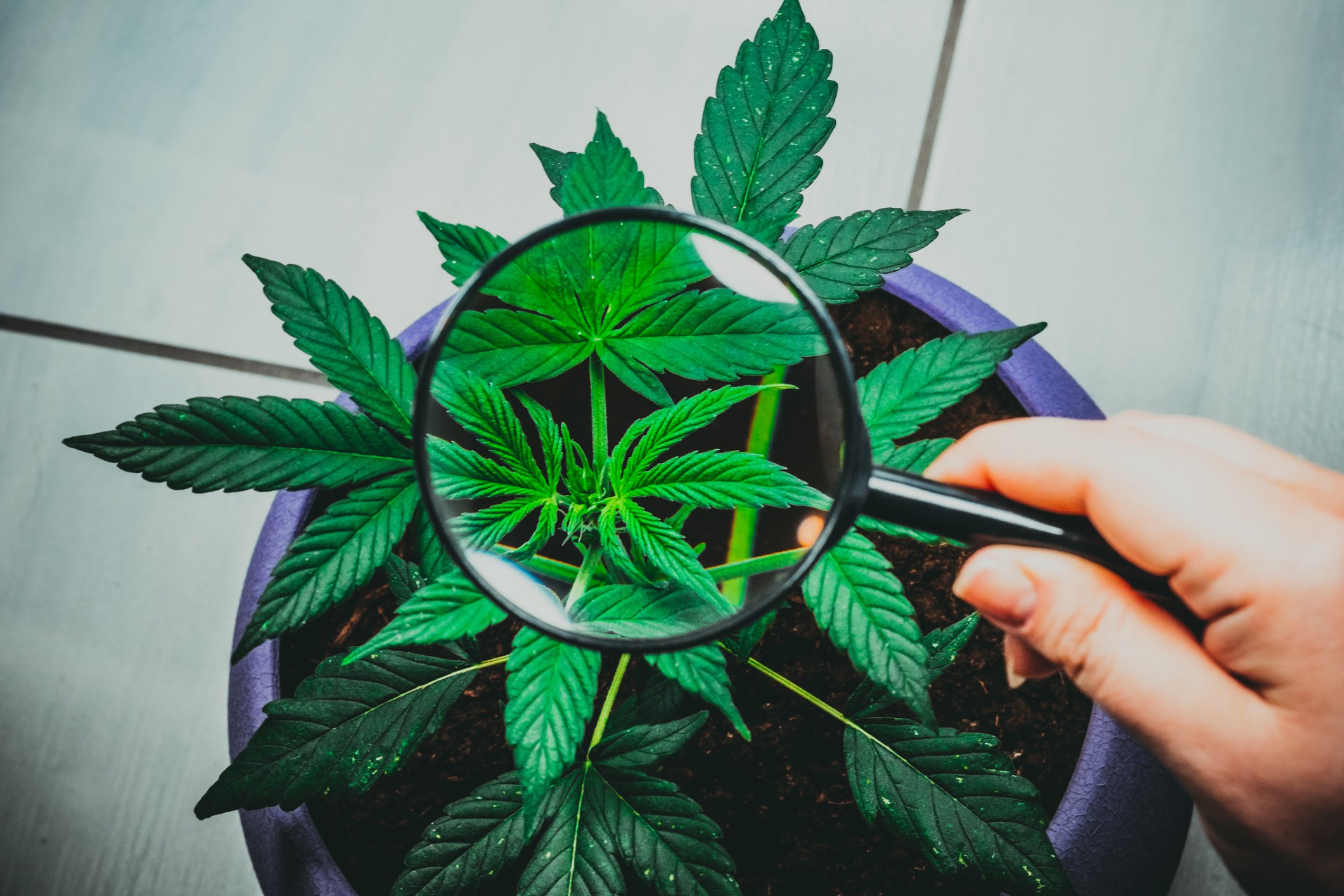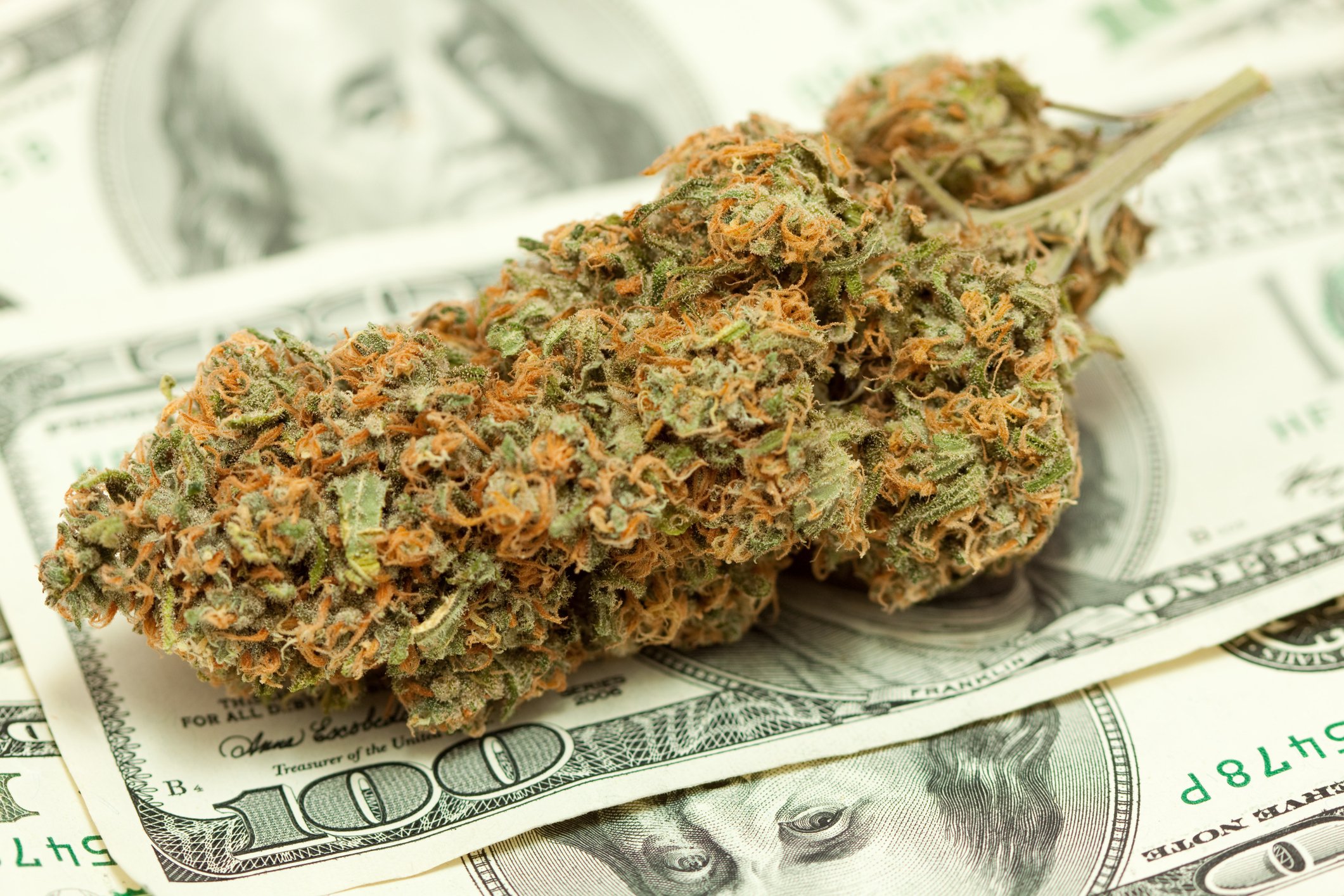There's simply no industry that'll have investors seeing green quite like the marijuana industry. According to the duo of Arcview Market Research and BDS Analytics, the global weed industry is on track to grow by 38% in 2019 to $16.9 billion, with sales more than doubling between 2018 and 2022 to an estimated $31.3 billion. Consistent double-digit growth is hard to come by in the investment world, which is what makes the cannabis industry such a popular choice.
But investors are also acutely aware that not every pot stock can be a winner. Although market share remains fluid in the early going, there are telltale signs of worrisome valuations throughout the industry. Perhaps no marijuana stocks are more avoidable in April than the following three.

Image source: Getty Images.
Tilray
Trust me, I do understand the excitement surrounding Tilray (TLRY +0.00%). It's had incredible success marketing its cannabis brands to Canada's medical community, has landed two brand-name partnerships with Anheuser-Busch InBev and Novartis' generic-drug subsidiary Sandoz, and has close to 80% of its shares owned by private-equity fund Privateer Holdings. This lack of available float is what played a big role in pushing Tilray's stock from a list price of $17 in mid-July to an intraday high of $300 two months later.
But any sane investors who read the company's most recent operating results and listened to Tilray's conference call with analysts are going to keep their distance.
For the quarter, Tilray recorded a meager $15.5 million in sales and managed only a 20% gross margin on that revenue. Even with an increase in higher-margin alternative products being sold, the company's need to purchase weed from third-party providers (because its own production isn't anywhere near that of its mid- and large-cap peers) wrecked its fourth-quarter margins. Altogether, operating losses tallied $22.9 million in the fourth quarter and $57.7 million for the full year. It's unclear exactly when Tilray has a real shot at being profitable -- and that's a red flag.
Another genuine red flag is commentary from CEO Brendan Kennedy. To summarize, Kennedy noted that assets in Canada were overpriced, and that the company sees better investment opportunities in the U.S. and Europe. While the markets for both are larger than Canada over the long run, this strategy shift sounds more like a tap-out in Canada than a decision made from a position of strength.
With Tilray switching gears, producing sizable operating losses, and trailing its peers by a mile in the production department, it becomes a bona fide marijuana stock to avoid in April.

Image source: Getty Images.
Insys Therapeutics
Another pot stock that's a regular on the "avoid like the plague" list is drugmaker Insys Therapeutics (INSY +0.00%). Insys has been a mess for years, yet it somehow keeps digging itself an ever-deepening hole.
The front-and-center issue for Insys is that its lead drug Subsys, a fentanyl-based sublingual spray for breakthrough cancer pain, is tainted. Insys settled with the U.S. Department of Justice after bribing physicians to prescribe Subsys for off-label use. As a result, the company went from racking up $330 million annually from Subsys in 2015 to just $78.8 million in net sales from the drug in 2018. Between the damage done to the company's image with physicians and patients, and the ongoing war against opioids and fentanyl-based products by the U.S. government, Subsys is in bad shape.
Then there's Syndros, a dronabinol oral solution to prevent chemotherapy-induced nausea and vomiting. Dronabinol is a fancy way of saying synthetic tetrahydrocannabinol (THC), the cannabinoid that gets a user high. Once deemed a drug capable of between $200 million and $300 million in peak annual sales, Syndros generated just $3.3 million in full-year sales in 2018, and has less than $5 million in lifetime sales since being launch in the summer of 2017. It's been a complete bust for the company.
What makes Insys especially avoidable is the company's 10-K filing with the Securities and Exchange Commission. Contained within was a going-concern warning from the auditor, signaling that Insys may not have enough cash on hand to keep the lights on over the next year. With losses mounting, Insys is a marijuana stock you'll want to keep your distance from.

Image source: Getty Images.
Village Farms International
Rarely will you find a marijuana stock that turned a profit in its latest quarterly report on this list, but with shares of Village Farms International (VFF 0.29%) soaring more than 330% since the year began, it makes for a logical candidate to avoid in April.
Unlike most cannabis growers, Village Farms has a fallback. Most of the company's revenue is derived from its vegetable-growing greenhouses, with only a small portion (for the time being) coming from its joint venture with Emerald Health Therapeutics (EMHTF +0.00%). Pure Sunfarms, as the joint venture is known, involves taking 1.03 million square feet of vegetable-growing greenhouse space in British Columbia that belongs to Village Farms and having Emerald Health retrofit it for cannabis production. When fully complete and licensed, it should yield north of 75,000 kilos of weed per year. In Village Farms' fourth-quarter report, it recorded a very small profit from Pure Sunfarms' first sales.
The company has also benefited from not diluting its shareholders. Since it has its fallback vegetable-growing business, this lack of dilution, and an uplisting from the over-the-counter exchange to the Nasdaq, has lit a fire under its stock.
But here's the problem: Most of the company's revenue comes from low-margin, weather-dependent vegetable-growing greenhouses. For the time being, its joint venture with Emerald Health is producing just a small fraction of its revenue and profits. And it's going to take at least another year before the facility is operating at full capacity. With a lack of real differentiation, and in my opinion a subpar crop yield per square foot relative to the industry average, a 330%-plus gain over the past three months seems highly unwarranted.







